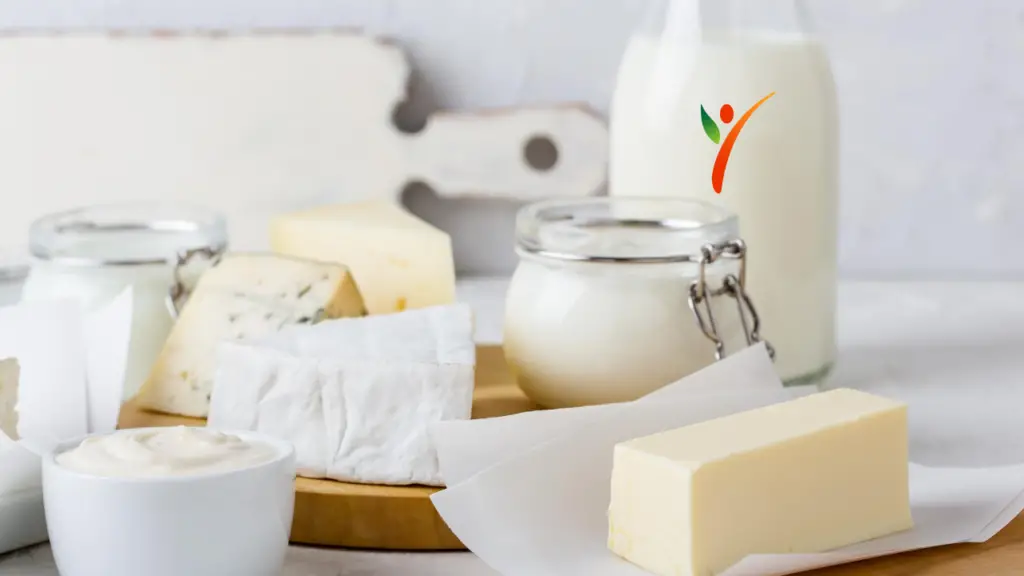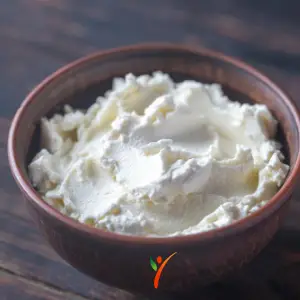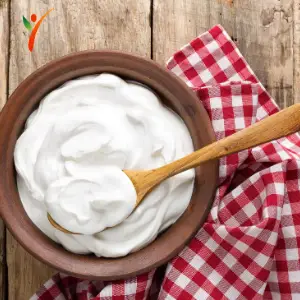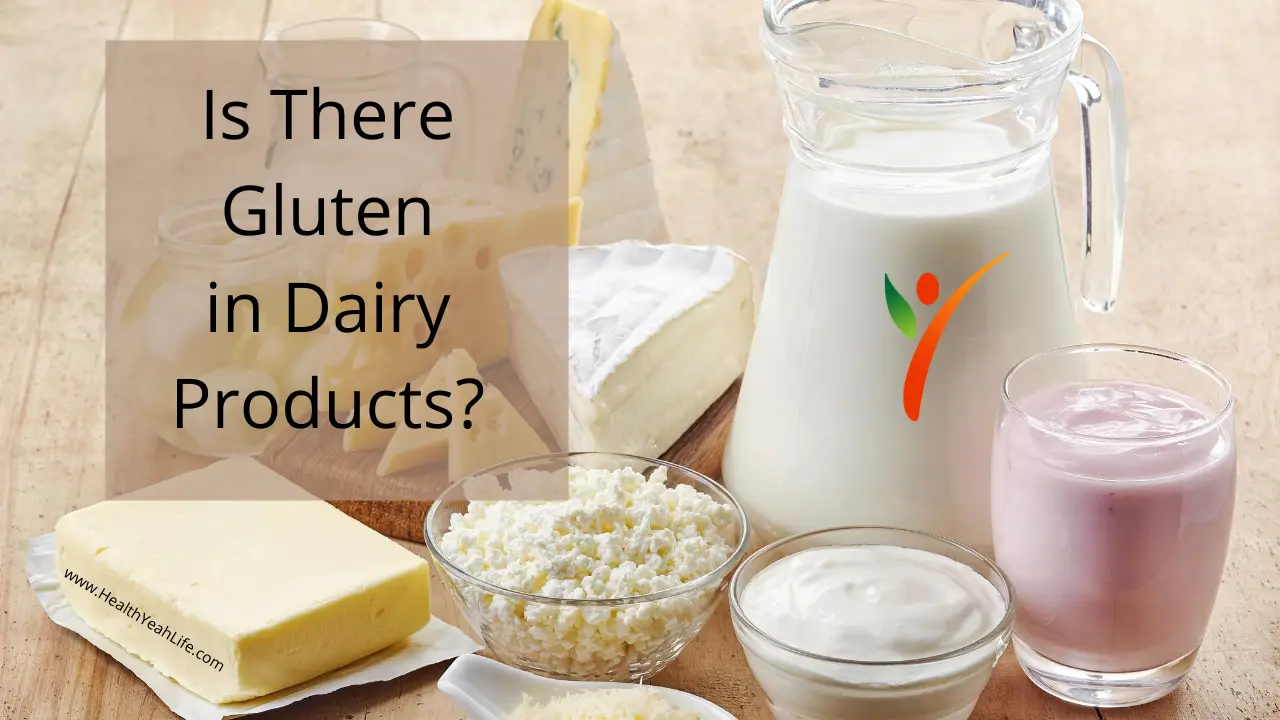From hot chocolate in winters to ice cream in summers, dairy products have become common to eat in our daily routine. For many, eating dairy products on a daily basis doesn't cause any problems. However, those on a gluten-free diet might have questions about whether consuming dairy is safe to eat on their diet. After all, most don't want to miss out on these nutrition-packed additions to your daily routine if you can. Here's everything you need to know about dairy products on a gluten-free diet.
Dairy and Gluten; Are They Related?
Dairy food is gluten-free. According to a Celiac Disease Foundation report, the dairy group as a whole is naturally gluten-free. This is something that will make more sense once you get to know where gluten comes from. Gluten is a protein present in grains such as wheat, barley, and rye. So it is fairly reasonable to assume that by default, all dairy products are devoid of gluten.
However, during processing, there is a significant risk of cross-contamination. Moreover, various frozen desserts and certain cheese spreads contain gluten-containing flavorings and certain derivatives, making it impossible for the meal to be gluten-free. Keep a distance from malted milk, since anything with the word malt on its label contains barley and thus has gluten. If you're recently diagnosed with celiac disease, keep an eye out for secondary lactose intolerance due to the damage caused by gluten in the small intestine. On the contrary, there might be gluten-containing ingredients in some cheese products. Yogurt also follows the same trend more or less, with it naturally being gluten-free. But sometimes certain varieties of yogurt contain ingredients or flavorings which have gluten. Be cautious regarding yogurts packaged with granola toppings; always make sure you check the ingredients list. It is rare for butter to have gluten add-ins.
What types of Dairy Products Can You Eat on a Gluten-Free Diet?

When the word ‘dairy' is mentioned, the first thing you might think of is milk, cheese, or cream. However, there are tons of gluten-free products in the dairy sector that you wouldn’t want to miss. Not only do dairy products provide an added richness to your daily meals, but also fulfill your vital nutrient requirements. Here’s a list of dairy products you should add to the list next time you go grocery shopping:
Buttermilk:

If you’re someone who likes an extra touch of sour-taste in their dairy product, buttermilk is exactly what you need. Buttermilk is the remnant yellow liquid after butter is churned and collected. The sour taste of buttermilk is due to the high amount of lactic acid present in it. While you can drink buttermilk itself due to its nutritional value, it is currently more popular as a marination item. Since it acts as a tenderizer for meat due to the lactic acid, you’ll be getting delicious meat and an added flavor to your dish.
Clotted Cream:
Clotted cream gets its name from its appearance and how it’s made. A dairy product originating from England, it has become a dairy sensation with its exquisite taste. Clotted cream has kept up with the tradition of afternoon tea with scones in England. Clotted cream is thicker than regular cream due to heavy baking cream to make it denser. Moreover, it's a great addition to spread over your favorite tea items.
Cream Cheese:

While cream cheese has been around for some time, it has recently become a raving ingredient. And for all the right reasons, cream cheese can be used to make classic cheesecakes or the perfect Fettucine alfredo. It is necessary to note that cream cheese comes in numerous variations depending on its production. Some modifications might fully contain cheese with salt, while others may contain additives. For those on a gluten-free diet, the safe-call is to go for the former option to avoid any gluten-containing ingredients. Moreover, cream cheese without additives is generally better for your health as well. Enhance the taste of your dishes with cream cheese, whether you're going for a savory meal or a dessert.
Sour Cream:
Sour cream is a combination of fermented cream with bacterial cultures of lactic acid. The thing about sour cream is that you're getting a touch of sourness with a smooth cream that's high in fat content. Additionally, you'll be getting your required amount of Vitamin A, D, and calcium intake by adding sour cream to your meals. On a side note, you can easily make sour cream yourself without any additives and the risk of gluten-containing ingredients. Add a dollop to make Mexican food dishes pop, such as tacos, enchiladas, and even sides like refried beans with sour cream.
Yogurt:

Yogurt is one of the direct substitutes of milk. However, the denaturation of protein in milk is done first with the help of bacterial cultures. Yogurt is one of the most commonly used dairy products all across the world. Additionally, you'll be doing your body a favor by increasing your gut health's immunity against infectious diseases. While marinations and sauces can be made with yogurt, you can also make fruit-flavored yogurt for a healthy dessert.
Secrets to Including Dairy on a Gluten-Free Diet:
- Always Check for Additives- While natural dairy products themselves are gluten-free, you should be checking for any additives. Additives such as coloring agents and sweeteners may contain grain components that have gluten in them. This goes especially for flavored dairy products such as milk and yogurt. Hence, always double-check the labeling to avoid risking consumption of gluten.
- Avoid Malted Milk Drinks- Malted milk drinks are made from milk and a powdered mixture of whole-grain ingredients, e.g. barley and wheat flour. Since malted milk drinks are highly concentrated in gluten-containing ingredients, it’s a no-go for those on a gluten-free diet. If you’re in the mood for a refreshing drink, go for flavored milk instead alongside double-checking the ingredients.
- Make Your own Cream- Variations of cream that you find in the market might also include gluten due to additives. But even if it doesn't, the risk of cross-contamination during production remains. If you're on a gluten-free diet, especially if you have celiac disease or gluten sensitivities, you'd want to avoid that. Therefore, the best solution is to make your cream at home! You can easily make any type of cream such as sour cream, cream cheese, whipping cream, heavy cream, etc. The plus side to this is it’s healthier, much cheaper, and you wouldn’t always be worrying about the gluten-content.
Making Cream Cheese at Home:

We've already established how making cream cheese yourself can be beneficial in so many ways than the store-bought products. Here's a simple method of making cream cheese at home without too much work.
Ingredients
- 4 cups (32oz /1000ml) full-fat whole milk
- 2-3 tablespoons lemon juice or vinegar
- 1/4 – 1/2 teaspoon salt
Instructions
- Take a saucepan and start heating milk on a high flame. Keep stirring the milk until it starts to simmer.
- At this point, turn the flame down to medium. Add lemon juice or vinegar in small quantities with 1-minute intervals in-between. Meanwhile, keep stirring the milk in the saucepan.
- Once the mixture starts to curdle, keep stirring until it has separated within a few minutes. A layer of thick curdles should form on top. Remove the saucepan from heat.
- Place a sieve with cheesecloth on top of a bowl. Gradually start pouring the curd mixture into the strainer. Let the mixture strain and afterward cool it for 15 minutes.
- Transfer your curd mixture to a food grinder and process it for 3-4 minutes till the mixture has become smooth.
- Add salt to enhance the taste of your cream cheese. If you want additional flavors, you can add herbs or garlic.
- Store the cream cheese in a refrigerator and use it within 2 weeks.
In Conclusion:
A gluten-free diet and dairy can be a combination that goes together. You can attain both enhanced richness and health benefits to your routine by adding dairy products. As long as you’re careful of any extra gluten-containing additives, you’re good to go. There isn't a need to define your gluten-free diet with restrictions, rather you’ve plenty of options to experiment on your daily meal plan. Take note on how your body feels after eating any food, especially dairy. Some people do not tolerate dairy products. If you notice any bloating or other factors that may mean you also have a dairy intolerance.






1 thought on “Is there gluten in dairy products?”
Comments are closed.